
CCCC will celebrate its 50th anniversary on October 12, 2022. Milestones like this provide moments to step out of the day-to-day to look back and reflect on the past.
In the first post of this series, we looked at how to do a historical review and decide what you would like to preserve or revive from your ministry’s past.
In this post, I’ll present another use of the historical review: to crystallize what you don’t want to carry forward from your past.
Through our own historical review, CCCC has left behind or radically changed some longstanding programs that are part of our origin story (which I’ll share below).
Leaving Legacies Behind
Your ministry may have been founded with a particular program, culture, or way of operating that was perfectly appropriate for its time but that isn’t the best option for today. The leaders who followed the founders also left you with the results of their time in leadership. Your ministry today has accumulated lots of legacies from its earlier years and bringing those legacies to an end can seem like a rejection of your predecessors. It is even more difficult to do away with their legacies if staff and supporters are attached to them. Such attachments prevent us from moving forward today as we should.
It’s easier for everyone to break from the past when we acknowledge that our predecessors did what was right given what they knew and their circumstances at the time. If they were present with us today, they might make different decisions given current knowledge and circumstances, decisions that might look a lot like the ones we’re wanting to make. We can still respect and honour them even while letting go of parts of their legacy.
If you serve long enough in leadership at the same ministry, some day you will find yourself overturning one of your own decisions. Having done this makes it easier to lead your organization in breaking from the past because you yourself have broken from your own past, which shows you are not treating your predecessors any differently than you treat yourself.
For example, in 2006 CCCC introduced a new brand with the tagline “Advancing Ministry Together.” This was the perfect positioning statement at the time and I was thrilled to approve it. However, in 2020 we replaced that tagline, and I was thrilled to approve the new one: “Supporting Ministries in a Complex World.”
It wasn’t that the previous tagline was bad. Not at all. It did its job positioning CCCC as advancing the mission of the Church alongside our members, striving for the same overall goal within a peer relationship. But by 2020, that point had been made. Now, we want to highlight how, by helping members address the complexities of operating a charity, we free them up to devote more of their time and attention to fulfilling their missions. This supports our End Statement which says we want our members to be exemplary, healthy, and effective Christian ministries. There is no shame in overturning earlier decisions because you need to make the best decision for your ministry at its current place in time.
Focus On the Ends, Not the Means
If your ministry’s core identity is based on anything other than your vision and values, you leave your ministry vulnerable to the vicissitudes of time. Supporters and others who identify your ministry with anything that is secondary to your true purpose will have a hard time staying connected with your ministry as it adapts and changes its programs or its way of being over time because they are preoccupied with mourning the loss of what once was.
Put first things first, front and centre. Achieving the vision is the reason your ministry exists. Your mission is to make the vision a reality or as close to reality as we can get before Christ returns. Corporate values also need to be front and centre because they are the screen you use to guide corporate behaviour and evaluate the choices the ministry must make,
Origin stories are very powerful, so their focus should be on the vision and values that led to the ministry’s creation. In your origin story, present the ministry’s initial programs, culture, and way of being as representative of how the vision and values were applied at that time, leaving it open for you to show how changes today are the result of the same vision and values being applied in current circumstances.
If you’d like additional help for dealing with the legacies of the past, read my post, Corporate History: Resource or Constraint?
What to Leave Behind
Deciding what to leave behind starts with evaluating the programs and support functions that you have questions about. Sometimes you just know in your heart that a legacy needs to go, but you should still do an evaluation to verify that what you believe is true. The point is to have a factual understanding of the results they produce and to test your assumptions about what is working and what isn’t. Once the evaluations are done, you are ready to consider what needs to be left behind to make room for something better.
Here are some ways to help you make that decision. They can be used together or separately. The more difficult the decision, the more helpful it is to come at the decision from different angles.
A Strategic Process
Imagine you are creating a new ministry with the same purpose as your current ministry. With no legacies from the past and no constraints imposed by people or resources, what programs would the new ministry have? How would it be structured? How would it be funded? What would you do in-house and what would you outsource? What assets would you need? What values would guide your decisions? What corporate culture would support the way you want the ministry to work?
Now, what do you want to incorporate from the hypothetical new ministry into your current ministry?
And finally, the key point, What from your current ministry has to go to make room for the new?
An “Accounting” Process
This process makes use of an accounting concept, zero-based budgeting. It is most obviously applicable to decisions about which programs to offer, but it can also be used for values and culture. Applying values such as excellence has a cost (quality management, equipment, etc.) as does building and maintaining a corporate culture (training, branding, etc.). And it can be used to assess fundraising and other support functions.
When budgets are created, the typical starting point is the previous year’s budget or the projected year-end actual results. Zero-based budgeting starts with no budget at all, and every expense must be justified as a new expense. Nothing is taken for granted. The old will compete against the new and the best use of resources gets included in the budget. This approach is similar to the strategic approach above in that it forces you to start fresh.
A Stewardship Process
A basic responsibility of ministry leaders is to provide good stewardship of the ministry’s resources. A simple question to ask about how well time and money are being used is, Given the evaluation of results, is this a good use of our time and money? If not, is there a way to improve what we are doing to get better results? If not, then let it go and put the resources to better use.
“But, but, but…”
You might be concerned that time and money already invested in something that is then cancelled will be wasted. The way to look at sunk costs is to accept that nothing can be done about them because they have already been spent. You might be able to recoup some of them, but the real question is, Given that yesterday’s investments can’t be undone, what is the best use of the resources you have to invest today? If you continue to fund an inferior option, then good money is going after bad. The best thing to do is to invest now in the superior option.
Some Examples from CCCC
All of the following programs were considered flagship programs for CCCC and all of them have either been terminated or radically transformed. The Bulletin and the Conference were the two programs we started in our first year, and the Charities Handbook and Regional Seminars were two very long-running programs.
The Bulletin
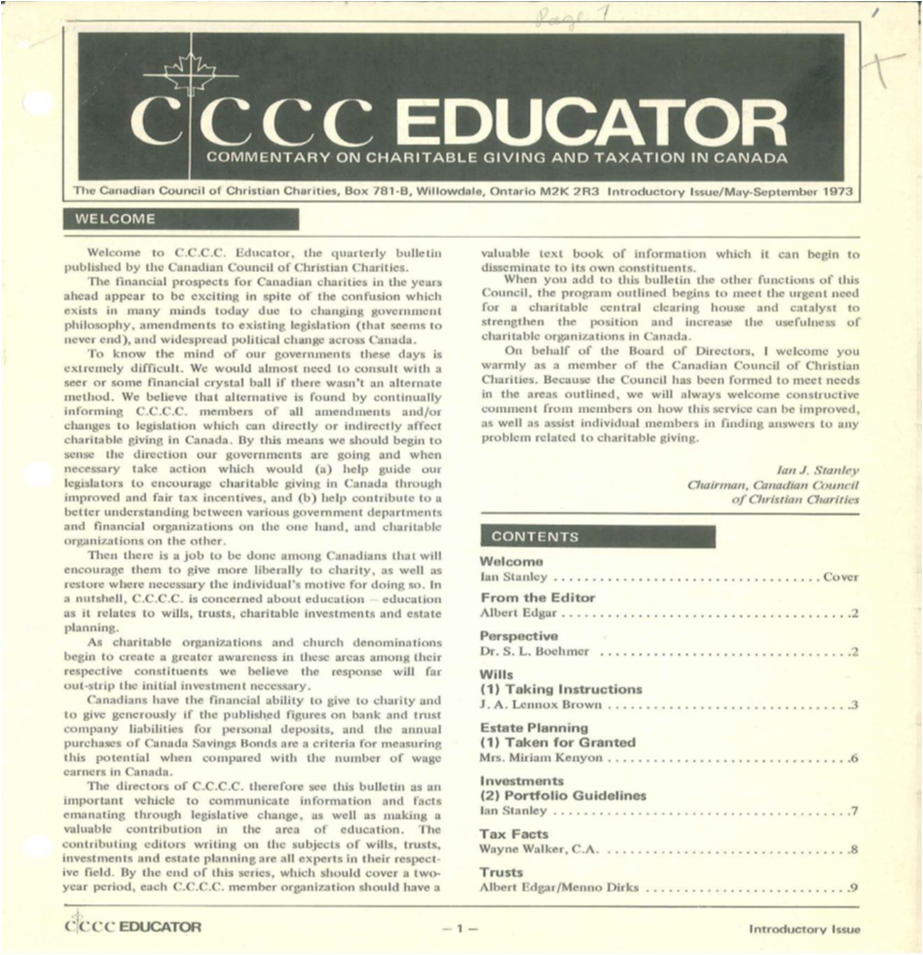
When CCCC started, it did not have members. Instead, it had subscribers because the very first program was the CCCC Educator newsletter, the precursor to the CCCC Bulletin. Based on an interview our first executive director gave to the KW Record, they were still called subscribers as late as November 1984.
CCCC started with 45 subscribers who received a print edition of the Educator by mail. Over time, the newsletter developed into a glossy magazine format and then into a digital publication. Content creation was determined by the publishing schedule and the printed newsletters/magazines formed our knowledge base.
When the Internet became available, CCCC created a website and, in time, Bulletin articles were reproduced on the site. Later, a full digital copy of the Bulletin was included.
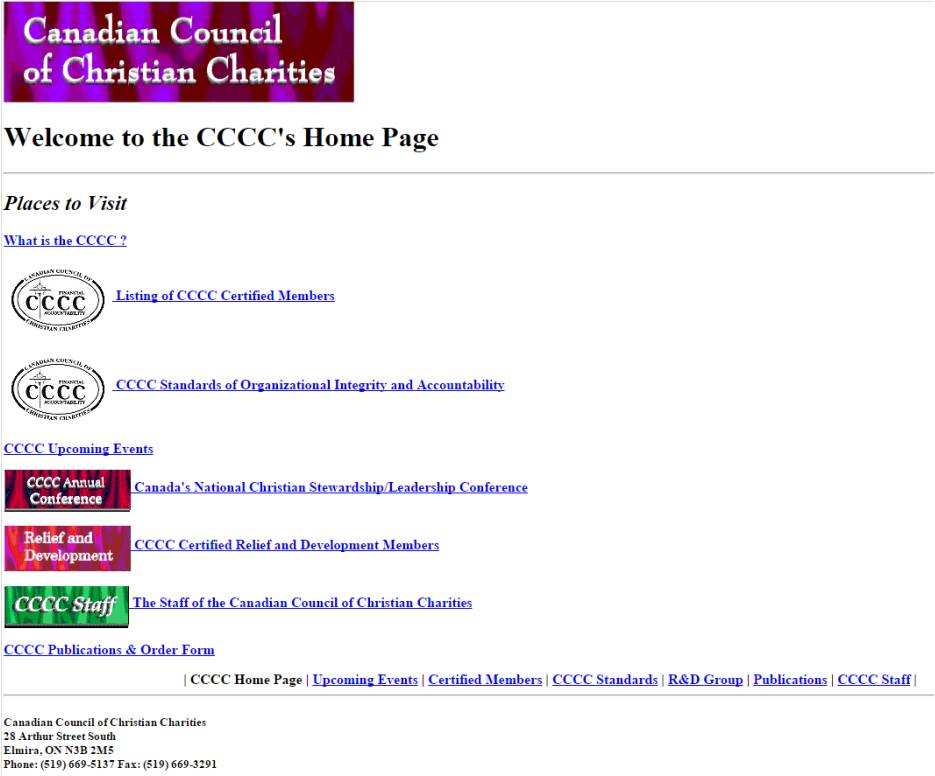
The problem was that the only way to get information into the website’s knowledge base was to write an article for the Bulletin, so the production of new knowledge was limited to what could be published in five print edition Bulletins per year. This was an economic decision because the number of issues and their page counts had budget implications. The bigger consideration was that knowledge on the same topic could be spread over many articles written over many years, making it difficult for members to know when they had fully covered a topic.
Today, CCCC has a completely different way of informing our members. Content is created directly for the CCCC Knowledge Base in real-time and the Bulletin is no longer a newsletter or magazine but an e-blast that is sent 11 times per year to advise members of the Knowledge Base’s new content. In addition, we are in the process of consolidating all the different articles into booklets. Members will be able to start reading an overview of a topic and then go deeper if they like.
By choosing to no longer produce the print edition of the Bulletin, we were able to reallocate the related costs of about $60,000 per year to developing and maintaining a far superior knowledge base.
The Charities Handbook
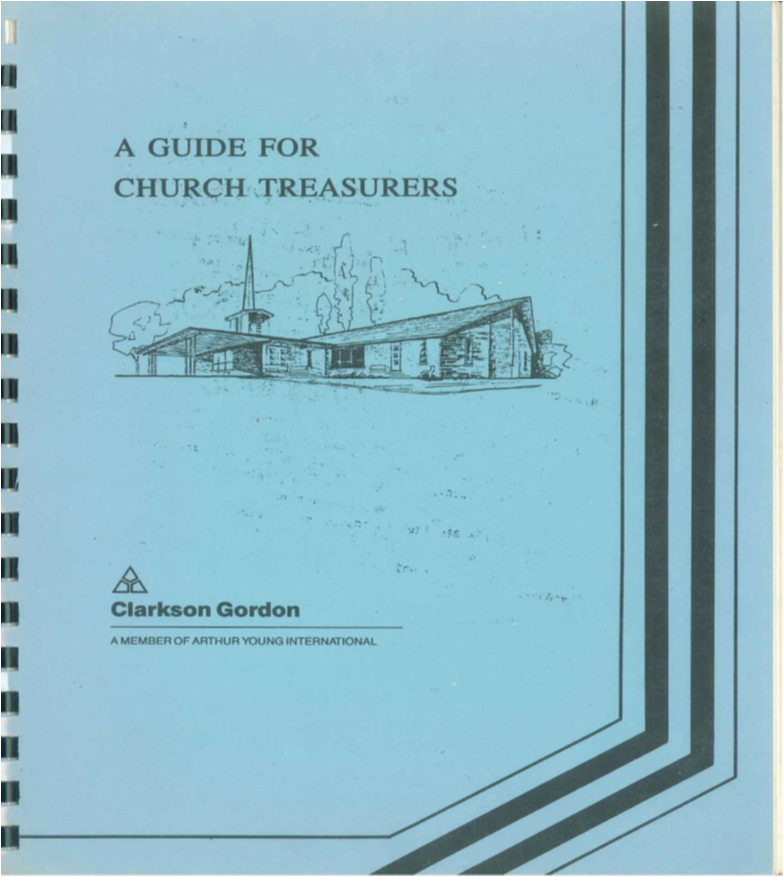
The Charities Handbook evolved from a seminar handout for church treasurers. The 2006 edition marked a significant step in its development when CCCC began justifying every statement with legal and regulatory citations and those that could not be supported were removed. This process took a few editions to complete, but it transformed the Charities Handbook into an authoritative publication that was valued not only by our members but also by lawyers and accountants who served charities. It also was used by the Charities Directorate as a reference book.
By the 2010s, however, the cost of printing and mailing the Charities Handbook was over $100,000 per edition, which made it a very expensive member benefit. That cost could no longer be justified given that publishing a digital book was now an option. Today, it is still available as a digital publication but it has also been divided into smaller topical units housed in our Knowledge Base.
The printing and mailing budget was reallocated to salaries, which we used to hire additional staff with capabilities that were new to CCCC and we used those capabilities to develop new programs.
The Conference and Regional Seminars
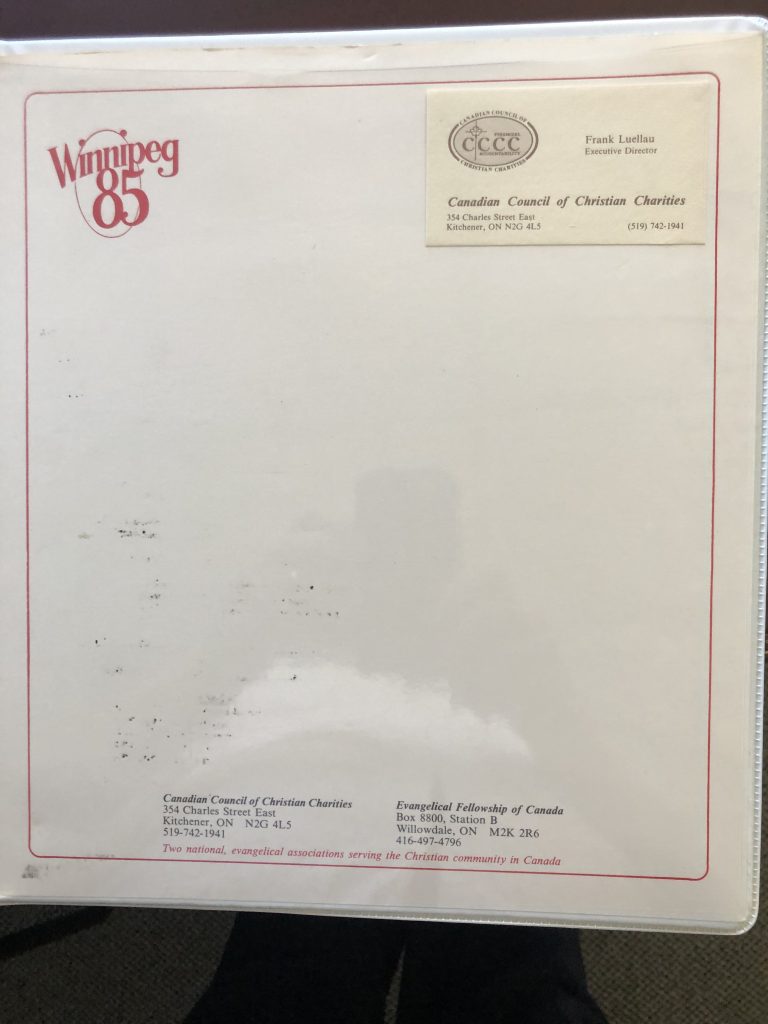
The first conference was held within a year of CCCC’s founding and it continued until 2016. A highlight was the awards ceremony in 2004 for the Best Christian Workplaces in Canada.
We became aware of the Best Christian Workplace Institute from attending a Christian Management Association conference in the spring of that year and wanted to bring the employee engagement survey to Canada and have the first celebration of Canadian Best Christian Workplaces only four months later! It was a very tight deadline, but we made it. We even adapted it for Canada. In the US, charities were ranked by their results and the top ten got recognition for being #5 or #1 as the case may be. In Canada, CCCC wants every Christian workplace to be a winner, so we said every charity that scored 4.0 or higher (out of 5) would be recognized as a Best Christian Workplace without regard to the ranking of their individual scores.
The conferences took an extremely large amount of staff time throughout the year as plenary and workshop topics were defined, speakers recruited, handout material produced, and logistics of the venues worked out. We always covered our out-of-pocket expenses but never covered our salary expense of $100,000. The same held true for the regional seminars, which cost us about $45,000 per year in staff time.
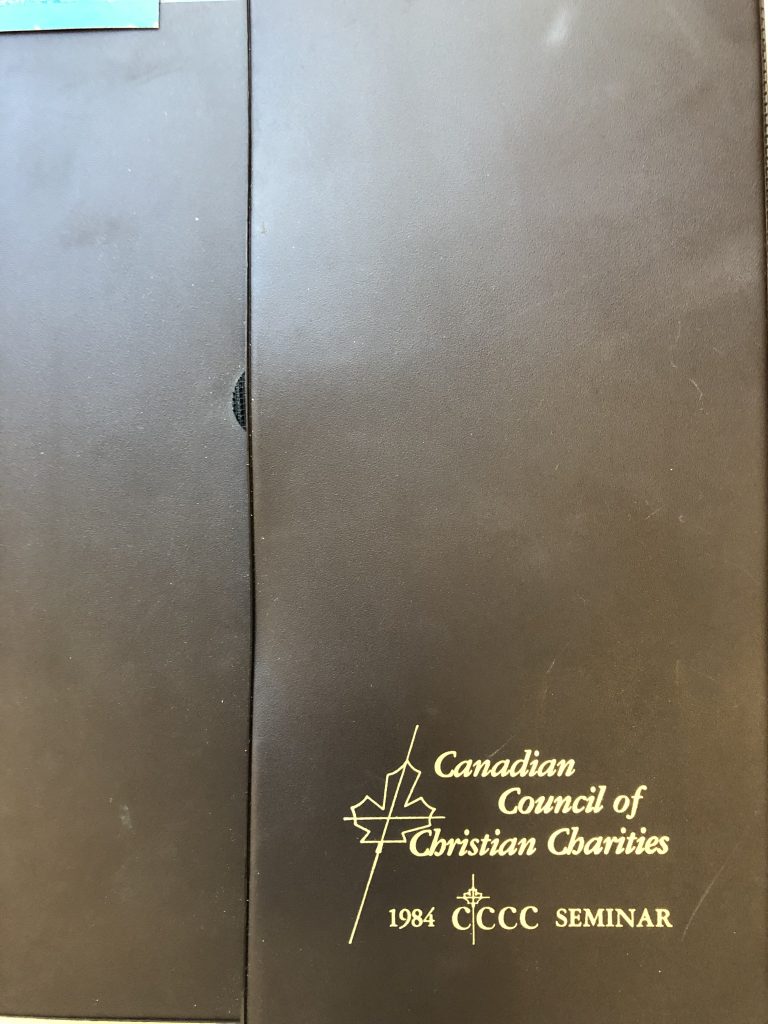
The purpose of these programs was to inform our members and give them access to experts who augmented the internal expertise that CCCC had. However, the impact was limited in terms of the number of participants at each one-time event and we felt it simply was not good stewardship to put such a large part of our resources into programs that benefited only a small percentage of our membership.
The most significant benefit of cancelling these two legacy programs was the amount of staff time that was freed up to pursue more impactful programs: the Knowledge Base, The Learning Table (online courses), The Green (online community), and Webinars (often with external experts). These programs convey the content of the former programs but in a format that reaches many more people and that can be accessed when users want as opposed to waiting for live events delivered on our schedule. Members can still interact with and learn from each other through The Green and they still have access to experts through recorded webinars.
The Savings
By leaving these programs behind, CCCC freed up over $300,000 of its budget to invest heavily in new programs to benefit our members. We put an end to bootstrapping our way forward by hiring new staff with the new capabilities we needed to shape our future in just the way that we want it to be.
Key Point: Leave legacies behind when there are better options today.


